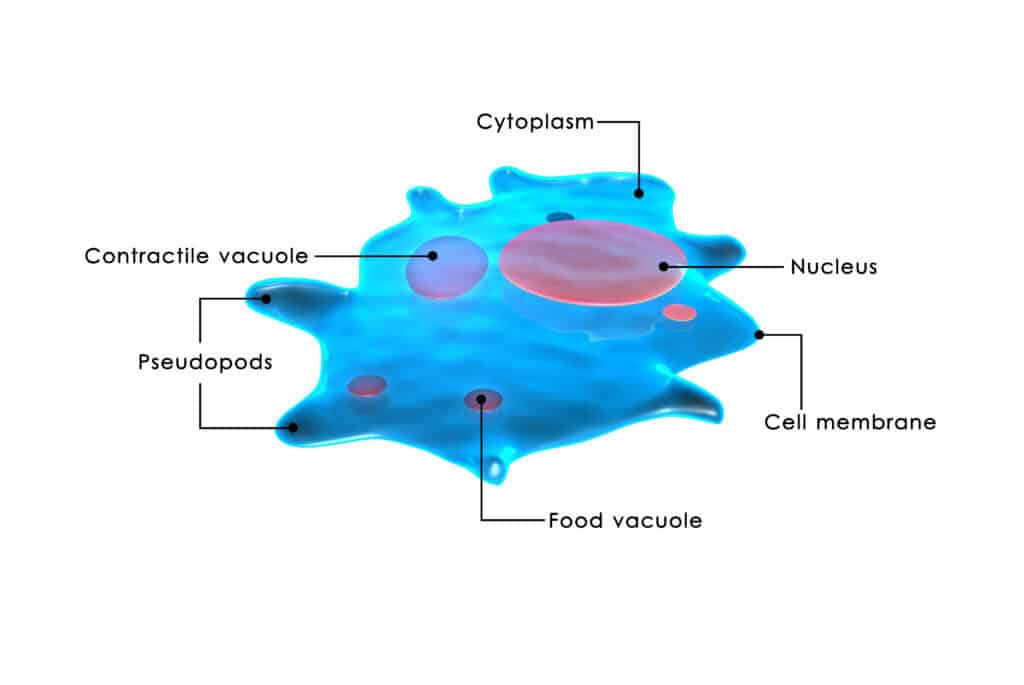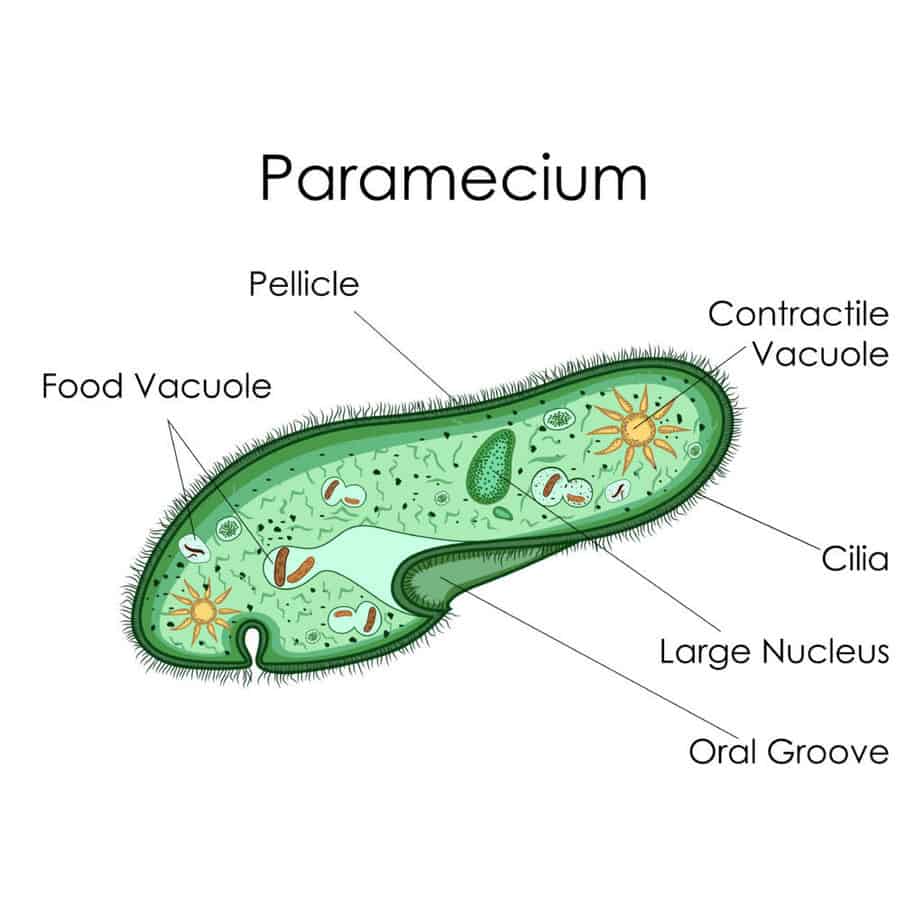No one can become an expert on cells, their parts, or their functions without careful research and examination. Not everyone is educated within this realm of science, and it can easily be confusing. One important part of a cell to be aware of is the contractile vacuole.
The contractile vacuole is a part of the cell that helps to regulate the amount of water that is inside a cell. It works as a protective mechanism to prevent the cell from taking in too much water. It also helps to regulate the pressure within the cell.
Cells are surprisingly complex systems. and it’s easy to be confused and unsure of the intricate parts of a cell, what they do, and how they function as a group. Within this article, we’ll discuss the main questions asked in regards to contractile vacuoles and the purpose they have.
What Is A Contractile Vacuole?
To put it simply, a contractile vacuole expels liquid on contraction in some protozoans. As a contractile vacuole, the sub-cellular structure works alongside osmoregulation that is found in protists and unicellular algae. It has also been known as the pulsatile or pulsating vacuole.
Contractile vacuoles usually belong to protists such as Paramecium, Dictyostelium, Amoeba, and Trypanosoma. They also have some correlation with green alga known as Chlamydomonas. Some species do not have a contractile vacuole, but they are most commonly found in marine organisms, parasites, and soil microorganisms. Therefore if the predominant species doesn’t have a cell wall, there is not contractile vacuole to possess it.
This vacuole has been lost in many multicellular organisms during the process of evolution, but it can still be found in some multicellular fungi at the unicellular stage. This is also true for sponges like amoebocytes, choanocytes, and pinacocytes. Source

What Does A Contractile Vacuole Do?
The function of a contractile vacuole or CV is to control the balance of intracellular water and act as an osmoregulatory organelle for amoebae and protozoa. A cell needs to have a certain amount of solute and solvent to properly function. This is where the water becomes the solvent and needs to be in proportion with any extra material or solute (Source).
Cells work by what is called osmosis- the movement of water across a semipermeable membrane. Basically, areas that are too dry will absorb water through the membrane, while systems that are too wet will expel water through the membrane.
If too much water is found, the contractile vacuole comes in to pump the water by expanding and filling up with the water to protect the cell. When water flows into the contractile vacuole, it is at the diastole stage. When it contracts and expels water outside of the cell, it is in the systole stage. If there is still too much water left, the cell swells up to eventually rupture and destroy itself. Source
The contractile vacuole has many structures attached, such as membrane folds, water tracts, small vesicles, and tubules. These structures are known as spongiomes. When the contractile vacuole works alongside these spongiomes, it is known as the CVC or contractile vacuole complex. The different spongiome’s purposes are to perform functions on the water to transport the contractile vacuole, localize it, and dock the contractile vacuole inside the cell. Source
The contractile vacuole system is what is called the osmoregulatory organelle, and is needed for survival by free-living cells that reside in hypotonic conditions. Disgorgin, a new contractile vacuole, has a TBC domain that contains protein to translocate to the contractile vacuole membrane during the last stage of charging and regulation. This helps the contractile vacuole plasma membrane fuse as the contractile vacuole has a certain hydrolysis for discharging. Source
Where Is The Contractile Vacuole Located?

Large contractile vacuoles can be found with an average diameter of 13 and 45 µm inside Paramecium and Amoeba. This is where they are comfortably isolated to adjust and manipulate the environment where they are. The smallest of contractile vacuoles reside in Chlamydomonas and they have a diameter of 1.5 µm. One complex contractile vacuole found in Paramecium surrounds itself by many canals to help channel the water. Source
The contractile vacuole remains stationary within the Euglena and any other flagellates. It is usually spherically shaped and found in freshwater where protozoa and other lower metazoans such as sponges and hydras reside. Then a collection from the excess fluid is periodically emptied into the surrounding medium from protoplasm.
The animal’s movement determines where the amoebas change position as most ciliates follow certain paths throughout the cell. Making a complete emptying cycle, depending on the species, can take from just a few seconds to a minute.
Which Protozoa Are Missing Contractile Vacuoles?
Marine protozoa, unlike freshwater protozoa, live in hypertonic environments where contractile vacuole store and remove excess water during endosmosis. There is no presence of the contractile vacuole in these protozoa because there is no need for water conservation as their water content could get lost in a hyperosmotic environment. Therefore their environment is hypo-osmotic (Source).
This is because the contractile vacuole is a type of vacuole that performs the function of draining excess water amounts inside the cell. Without their presence, both parasitic and marine protozoans can occur in isotonic conditions both in and out of the cell’s organisms. Source
So not every cell necessarily needs a contractile vacuole, but most of them do in order to maintain a healthy system and osmotic process.
Why are some protozoa missing contractile vacuoles?
Protozoans that contain parasitic elements live in an isotonic environment for their internal environment or cytoplasm. To have an isotonic solution in the equilibrium within the host’s cells’ cytoplasm, the parasite needs to exist. Otherwise, there isn’t a need for the contractile vacuole so it has evolved without ever developing one. Source
Do plant cells have contractile vacuoles?
Plant cells do not have contractile vacuoles. Rather, most mature plant cells have a singular large vacuole that occupies 30% of space inside a cell’s volume which then can occupy up to 80% for certain cell types/conditions. At times, the strands of cytoplasm flow through the vacuole. Source

